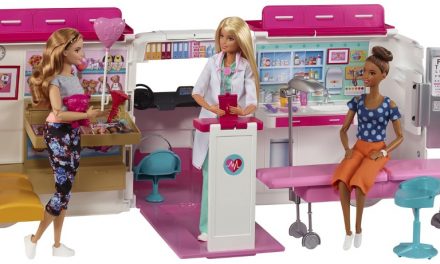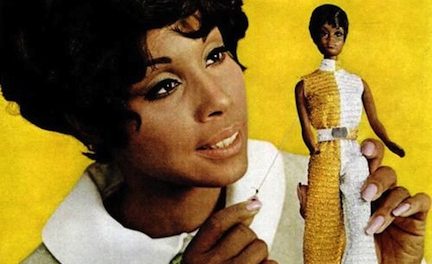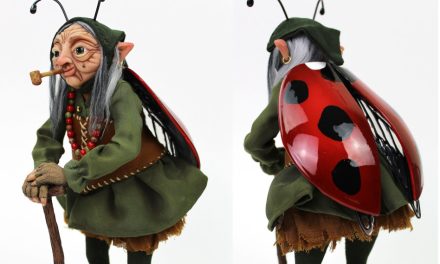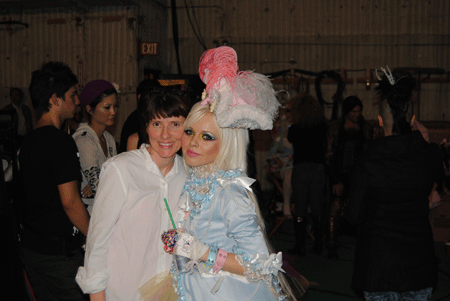By Judith Izen

Children wishing for more-lifelike dolls in the 1930s had their dreams fulfilled when several doll companies began selling their innovative drink-and-wet dolls. The first wetting doll was Dy-Dee, a fully jointed rubber doll that was introduced by Effanbee Doll Company in 1933. She could drink a bottle filled with liquid and then wet her diaper, as well as blow bubbles with a bubble wand. Children were thrilled and Dy-Dee became a best-selling doll. As with any successful item, however, competitors soon appeared.
American Character Doll Company released Wee-Wee in 1935. This doll could also drink and wet, which created legal trouble for American Character when Effanbee claimed the company had copied their drink-and-wet doll technology. Effanbee sued and won, with the judge ruling that American Character had infringed on Effanbee’s patent. As a result, production of the Wee-Wee doll stopped. Collectors don’t find many of them around today.
The Ideal Toy Company introduced their own drink-and-wet doll — Betsy Wetsy — in 1937. Just as they had done with American Character, Effanbee took Ideal to court, but this time, the judge ruled in Ideal’s favor. The judge explained that a biological function cannot be patented and that drinking and wetting one’s diaper is a biological function. Therefore, production of the doll continued.
Betsy Wetsy was all rubber and had either painted molded hair or a cute caracul wig. Marked “IDEAL” on her head and body, she came in 2-inch increments from 11 inches up to 19 inches. The doll could be purchased with a layette set in a box, trunk, suitcase, or bathinette — in any case, she always came with her bottle.
Drink-and-wet dolls had to take a hiatus during World War II because the rubber used to make their bodies was needed in the war effort. However, after the war, updated versions of the dolls were drinking and wetting their diapers again.
By 1950, American Character had found success again with a new and improved drink-and-wet doll: Tiny Tears. The company had added a feature so that when the doll’s belly was pressed, she “cried.” They also marketed Tiny Tears as being completely submersible in water. Tiny Tears became one of the most popular drink-and-wet dolls and was sold by American Character for the remainder of the company’s time in business.


PRICES
Dy-Dee
All rubber, 14 to 16 inches: $250
All rubber, 24 inches: $300
Hard-plastic head, rubber body: $200
Betsy Wetsy
All rubber: $150
Hard-plastic head, 12 inches: $85
Hard-plastic head, 16 inches: $100
All vinyl: $75
Tiny Tears
Hard-plastic head, 12 inches: $100
Hard-plastic head, 16 inches: $125
All vinyl: $85
All porcelain: $90
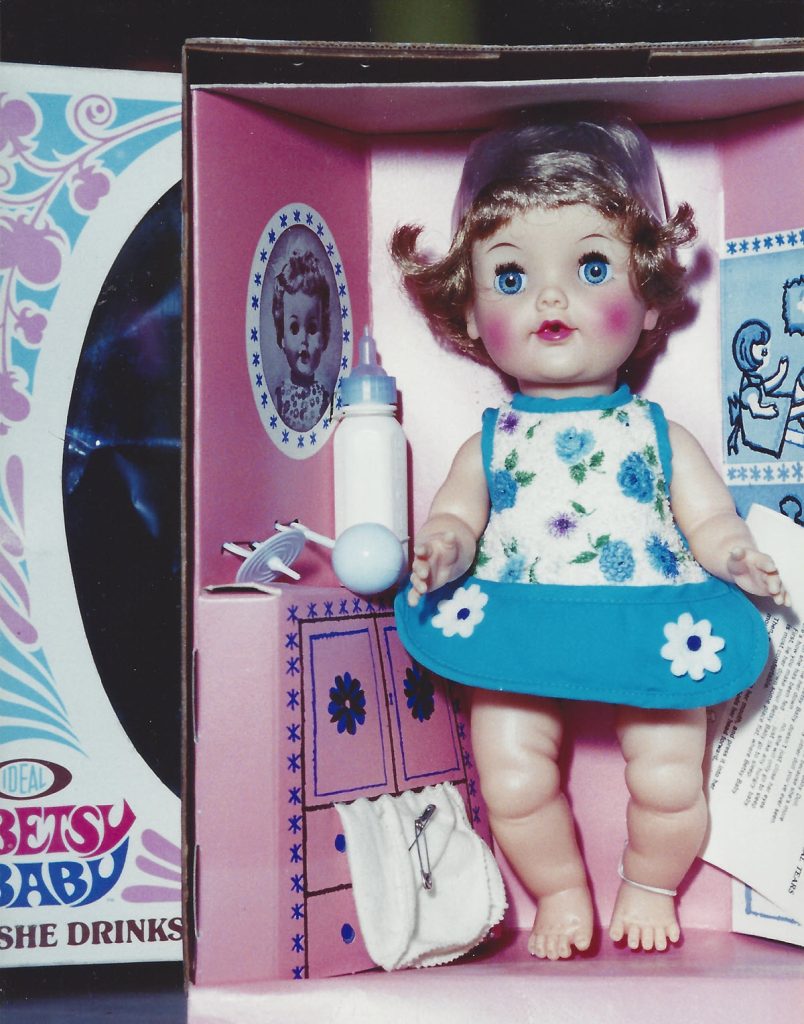
In the early 1950s, both Tiny Tears and Betsy Wetsy had rubber bodies and hard-plastic heads. Another generation of children had become enamored by the dolls’ ability to mimic actual biological functions. The dolls were available with layettes of diapers, tissues, and a nightgown.
Around the mid-1950s, Betsy Wetsy and Tiny Tears were upgraded to vinyl bodies and hard-plastic heads. The most expensive Betsy Wetsy had a nine-piece layette, which included a dress, a bonnet, an extra diaper, baby powder, booties, a bottle, soap, and a clothespin. These accessories added true play value to the doll.
Tiny Tears and Betsy Wetsy were both made entirely of soft vinyl by the late 1950s, which allowed for better drinking and wetting.
Ideal went on to create variations of the original Betsy Wetsy. They made an 8-inch, all-vinyl drinking and wetting Little Betsy Wetsy in 1957. In 1965, they extended their line with Betsy Baby, who had exclusive eye action with eyes that slowly closed during feeding. The basic idea of the doll and her functions remained the same: she drank, she wet. And children everywhere loved her.
Betsy Wetsy was so popular that Ideal manufactured a version of her throughout their existence. Along the way, Betsy Wetsy underwent many changes, going from all rubber to rubber with a hard-plastic head, then to a hard-plastic head with a vinyl body, and finally to all vinyl. She was available in many sizes, ranging from 9 inches to 23 inches.
The major competitor for Ideal’s Betsy Wetsy was American Character’s Tiny Tears. Interestingly, when American Character went out of business in the mid-1960s, Ideal bought the rights to the Tiny Tears name and came out with their own versions of Tiny Tears in the 1980s.
Through the years, children who played with the drink-and-wet dolls fed their dolls a lot of bottles and changed a lot of toy diapers. Along with the fun they had, they received preparation for real-life baby care.

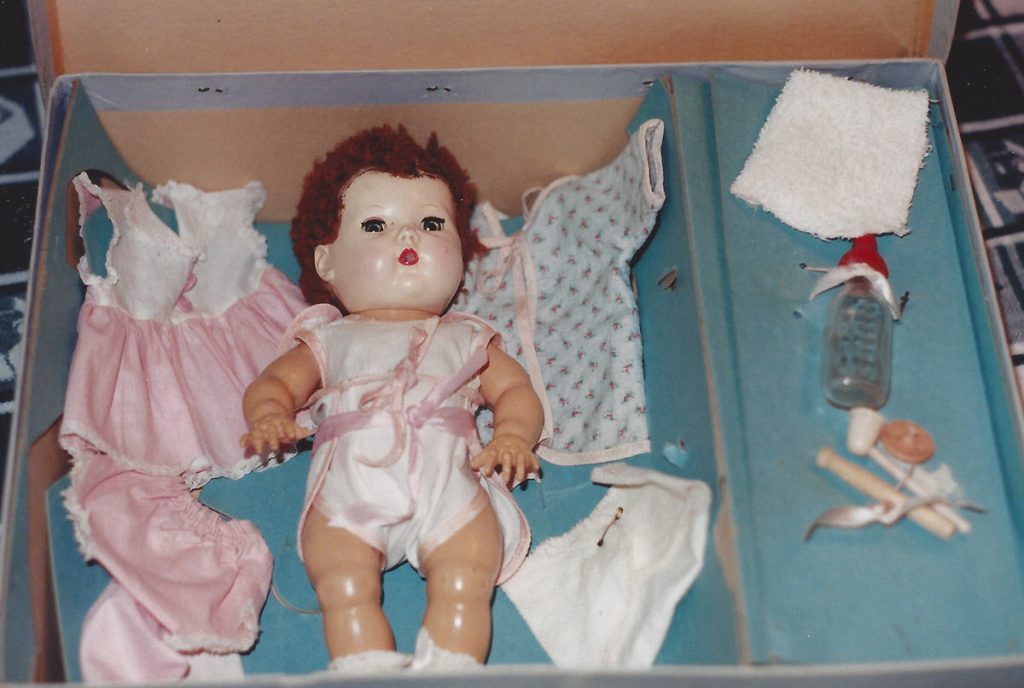



Judith Izen is the author of several books on collectible dolls: Collector’s Encyclopedia of Vogue Dolls, coauthored by Carol Stover; Collector’s Guide to Ideal Dolls; and American Character Dolls: Identification & Value Guide.

